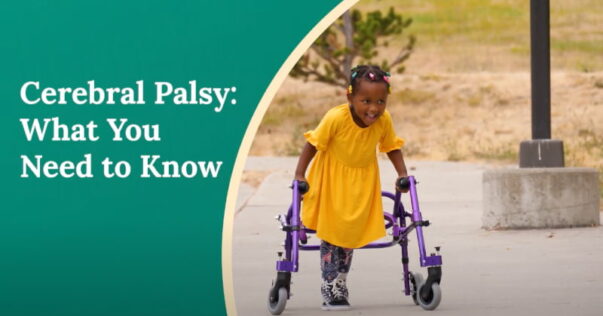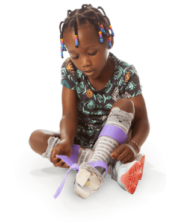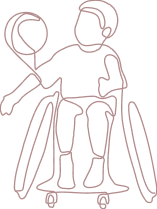What is cerebral palsy?
Cerebral palsy is a group of movement disorders that can cause problems with posture, manner of walking (gait), muscle tone, and coordination. Depending on the severity and type of CP, different parts of the body may be affected.
Although CP is usually caused by brain damage during childbirth, it is often not diagnosed until the first or second year of a child’s life.
This means it can be difficult for new parents to know how their child will be affected as they continue to grow.
Watch our short video to learn more about cerebral palsy.
Learn more about cerebral palsy and what to do if you suspect your child’s condition could have been prevented. View Transcript.
Duration: 1 min 04 sec
Cerebral palsy is a condition that affects how some people move and learn. It's caused by damage to the developing brain before or after birth.
According to the Centers for Disease Control and Prevention, about one out of every 345 children in the United States has cerebral palsy.
Sometimes, cerebral palsy can happen because of a preventable mistake by a doctor or hospital during childbirth. This is called medical malpractice.
If you think your child has cerebral palsy because of medical malpractice, you might be able to pursue life-changing compensation for their treatment. An experienced birth injury lawyer can explain your rights and help get you the support you need.
You may have legal options if your child’s cerebral palsy was caused by medical malpractice. Connect with the team at Cerebral Palsy Guide today for a free, no-obligation case review.
Unfortunately, there is no cure for cerebral palsy, and it can bring long-term developmental disabilities, depending on how severe it is. The lifetime cost of caring for a child with cerebral palsy can exceed $1.6 million, which is far more than most families could have prepared for.
However, if your child’s condition was caused by medical malpractice, cerebral palsy financial assistance may be available, so your child can live their best possible life.
If your child was diagnosed with CP, our team may be able to help you seek compensation.
We partner with cerebral palsy lawyers nationwide who have secured over $1 billion for families impacted by birth injuries, including CP.
Find out if we can help your family, too. Get a free case review right now.
Quick facts about cerebral palsy: 2025 update
- Cerebral palsy is the most common childhood motor disability in the U.S., affecting about 1 in 323 children.
- Brain damage leading to CP can occur before, during, or after birth, with most cases being congenital (present at birth).
- CP does not worsen over time, but symptoms may change as a child grows.
- Spastic cerebral palsy is the most common type, affecting 75-85% of people with CP.
- Up to 50% of children with CP have an intellectual disability, though severity varies.
- CP is more common among boys than girls.
- Cerebral palsy impacts Black children more than those of other races.
- Over half of children with CP can walk independently.
- Epilepsy (seizure disorder) affects up to 50% of people with CP, often requiring lifelong management.
- Premature birth and low birth weight significantly increase the risk of CP.
- Speech and language disorders occur in over 75% of children with CP.
- CP is linked to long-term health risks, including osteoporosis, chronic pain, and early aging.
Developmental delays and early signs of cerebral palsy
Cerebral palsy developmental delays are often one of the earliest signs of the condition, affecting a child’s ability to reach key milestones like rolling over, sitting up, or walking.
Babies with cerebral palsy may have difficulty controlling their muscles, leading to stiff or floppy movements, poor coordination, and trouble with balance.
Infants with early signs of cerebral palsy tend to:
- Favor one side of the body
- Have difficulty feeding or swallowing
- Show unusual posture
Parents may notice delays in motor skills, like difficulty grasping objects or bringing their hands to their mouths.
Other early signs of cerebral palsy can include excessive fussiness, weak or absent reflexes, and difficulty focusing their eyes.
While developmental delays alone do not confirm a cerebral palsy diagnosis, they can indicate a need for further medical evaluation.
Families concerned about their child’s development should consult a doctor as soon as possible. Cerebral Palsy Guide has a team of registered nurses who can listen to your concerns and provide helpful information.
Connect with an experienced labor and delivery nurse right now — for free.
Cerebral palsy symptoms
The symptoms of cerebral palsy in babies can cause numerous physical and neurological issues that can greatly affect a child's development.
Cerebral palsy symptoms can differ for each child, depending on the severity and location of the brain damage. Learn more about CP symptoms below.
Physical symptoms
Some cerebral palsy characteristics are muscle stiffness, poor coordination, involuntary movements, and difficulty with balance and posture.
Physical symptoms of CP include:
- Contractures (shortening of muscles)
- Difficulties swallowing or sucking
- Drooling
- Exaggerated or jerky reflexes
- Floppy muscle tone
- Gastrointestinal problems (involving food digestion)
- Incontinence (loss of bladder control)
- Involuntary movements or tremors
- Lack of coordination and balance
- Problems with movement on one side of the body
- Stiff muscles (spasticity)
Check with your child's pediatrician if they are experiencing any of these symptoms.
Neurological symptoms
These affect the brain and nervous system, leading to learning, communication, and sensory processing difficulties.
Neurological symptoms of CP include:
- Buildup of pressure in the brain due to fluid imbalance (hydrocephalus)
- Behavioral problems
- Delayed motor skill development
- Difficulty with speech and language (dysarthria)
- Sensory impairments
- Vision and hearing problems
Parents and caregivers should monitor the timeline of their child’s developmental milestones, as babies with cerebral palsy may have developmental delays that go unnoticed.
What causes cerebral palsy in babies?
The main cause of CP is damage to the fetal or infant brain. Although the exact cause of brain damage can be difficult to pinpoint, several factors are linked to the condition.
- Bacterial and viral infections such as meningitis
- Bleeding inside the brain (intracranial hemorrhage)
- Brain damage from periventricular leukomalacia (PVL)
- Head injuries sustained during birth or within the first few years of life
- Kernicterus (brain damage from severe jaundice that goes untreated)
- Lack of oxygen to the brain (asphyxia) before, during, or after delivery
- Low birthweight and premature birth
- Multiple births, like twins, triplets, or more
- Prenatal exposure to drugs or alcohol
Generally, if the brain is damaged within the first 5 years of life, it may not develop properly.
Damage to the parts of the brain that control motor function can cause children to struggle with posture, balance, and movement.
Cerebral palsy caused by medical negligence
Some children develop cerebral palsy as the result of a birth injury caused by medical malpractice. These CP cases stem from inadequate care from medical professionals during the birthing process.
Examples of medical negligence that can lead to cerebral palsy include:
- Failing to detect or properly treat infections
- Ignoring changes in fetal heart rate
- Mismanaging a prolapsed umbilical cord, which can cut off oxygen to the baby
- Not performing a medically advisable cesarean section (C-section)
- Using delivery tools improperly, such as vacuum extractors and forceps
Medical professionals are trained to provide high-quality care and make lightning-fast decisions to keep mothers and babies safe. Those who fail to do so should be held responsible.
However, medical providers often downplay their role in causing harm or even deny it altogether.
Thankfully, trained legal professionals can help you understand what could have happened to your child. If you suspect your child suffered a preventable birth injury, we may be able to connect you with a top CP lawyer near you.
Get a free case review right now.
Cerebral palsy diagnosis
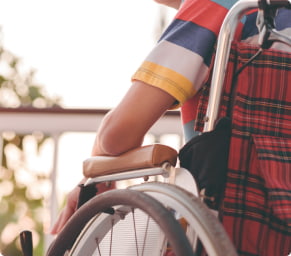

Although parents and caregivers may be the first to notice signs of cerebral palsy in infants, doctors often hesitate to make a cerebral palsy diagnosis until further symptoms can be observed as the child grows.
Therefore, cerebral palsy is usually diagnosed anywhere between 18 months and 5 years of age. Often, imaging tests are used to look for brain damage.
Learn more about how CP is diagnosed below.
1. Developmental monitoring
This involves tracking a child's growth and development on an ongoing basis at well-child visits.
Developmental monitoring includes discussing any concerns with parents, reviewing the child's developmental history, and observing the child's movements.
"Cerebral palsy usually isn’t diagnosed at birth, even if there was a lack of oxygen. It’s often identified later when a child misses developmental milestones.”
— Kristin Proctor, Cerebral Palsy Guide on-staff registered nurse
2. Developmental screening
This type of screening involves short tests to check for developmental delays, such as motor or movement delays. These can be parent-completed questionnaires or tests administered by the doctor.
The American Academy of Pediatrics (AAP) recommends that developmental screenings be performed at 9 months, 18 months, and 24 or 30 months.
Additional screenings can be done anytime concerns about a child's development arise.
3. Developmental and medical evaluations
These are detailed evaluations to diagnose specific developmental disorders, focusing on motor skills, muscle tone, reflexes, and posture.
Evaluations are conducted by cerebral palsy specialists like developmental pediatricians, child neurologists, or pediatric rehabilitation doctors.
Medical and imaging tests that can help diagnose cerebral palsy include:
- Computed tomography (CT) scans
- Cranial ultrasounds
- Electroencephalograms (EEG)
- Genetic or metabolic testing
- Magnetic resonance imaging (MRI) scans
Parents can begin managing their child’s condition and start any necessary treatment once a diagnosis is made.
Risk factors of cerebral palsy
There is no way to prevent a child from developing CP. That said, there are several measures that parents and doctors can take to reduce the risk.
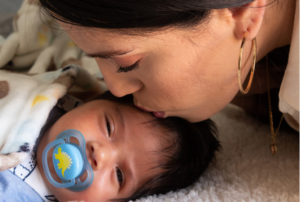

Cerebral palsy risk factors
Complications before, during, or after birth may increase the risk of cerebral palsy.
Routine doctor visits throughout pregnancy are crucial to managing cerebral palsy risk factors. Consistent check-ups can help detect issues and reduce the risk of complications.
Expectant mothers can also reduce the risks by:
- Avoiding alcohol, cigarettes, recreational drugs, and prescription drugs that may result in complications during pregnancy
- Controlling underlying health issues, such as blood pressure and diabetes
- Getting routine vaccinations
- Identifying any potential Rh incompatibility (difference in the presence of red blood cell proteins) between mother and child, which could lead to hemolytic anemia or jaundice
- Protecting against exposure to infections or viruses known to impact fetal health (for example, German measles, cytomegalovirus, and Zika)
Medical staff are trained to monitor fetal vital signs and determine the safest delivery method. However, medical mistakes made during childbirth can lead to life-altering injuries.
Our registered nurses are ready to help you understand if CP could have been prevented, offering the support and clarity you need.
Connect with a labor and delivery nurse right now — for free.
What are the types of cerebral palsy?
There are several types of cerebral palsy, and each is characterized by the location of the brain injury. Symptoms can vary depending on where and how badly the brain was damaged.
- Ataxic cerebral palsy: This type is caused by damage to the cerebellum, resulting in motor control and movement issues.
- Athetoid/dyskinetic cerebral palsy: Caused by damage to the basal ganglia and/or cerebellum, this condition results in fluctuating muscle tone and involuntary movements.
- Hypotonic CP: This rare type, also connected to cerebellum damage, is characterized by floppy muscles, excess flexibility, and poor mobility.
- Spastic CP: The most common type of cerebral palsy, this is caused by damage to the motor cortex and characterized by tight muscles and jerking movements.
- Mixed CP: Multiple areas of brain damage can lead to patients having more than one type of CP.
Doctors can perform tests to determine the type of CP a patient has. According to the Centers for Disease Control and Prevention (CDC), diagnosing the condition as early as possible is important for the child's long-term health and development.
Was your child recently diagnosed with cerebral palsy? You may qualify for financial assistance. Get your free case review right now.
Cerebral palsy coexisting conditions
Damage to the developing brain can cause health complications that are not a direct result of CP. Therefore, babies with cerebral palsy may also experience coexisting conditions.
Conditions that may occur alongside cerebral palsy include:
- Attention deficit hyperactivity disorder (ADHD)
- Chronic pain
- Epilepsy
- Intellectual disabilities
- Mental health disorders
- Spectrum disorders like autism
- Speech problems
- Vision or hearing impairments
Understanding and addressing these coexisting conditions is crucial for providing comprehensive care and helping a child with CP reach their full potential.
Cerebral palsy prognosis
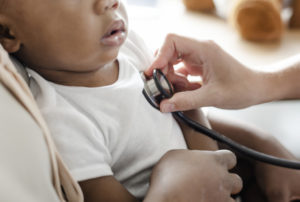

A cerebral palsy prognosis predicts the long-term effects the condition may have on a child’s mobility, development, and overall quality of life. Doctors will make a prognosis by examining motor skills, reflexes, and developmental milestones.
In general, CP does not affect life expectancy. Adults with cerebral palsy can live long and fulfilling lives, but some factors may affect prognosis.
Factors affecting a CP prognosis include:
- Difficulties with eating and swallowing
- Impairments in vision, hearing, or speech
- Intellectual disabilities
- Mobility limitations
- Musculoskeletal disorders
- Respiratory problems
- Seizures
Physical symptoms and motor skills may improve or worsen over time, depending on how the condition is managed. Proper treatment of physical and neurological symptoms may improve prognosis and help manage pain.
The American Academy of Pediatrics published a report examining data from over 1,300 studies of people with CP.
The report found that among individuals with CP:
- 1 in 2 has some form of intellectual disability
- 1 in 3 is unable to walk
- 1 in 4 is unable to speak
- 1 in 3 has hip displacements
- 1 in 4 has epilepsy
- 1 in 4 has a behavioral disorder
- 1 in 4 has bladder control problems
- 1 in 10 is blind
- 1 in 15 has to be tube-fed
- 1 in 25 is deaf
If you believe your child may have CP, download our FREE Cerebral Palsy Guide to get the information you need.
Cerebral palsy treatment options
While CP cannot be cured, a comprehensive cerebral palsy treatment approach can significantly enhance a child's quality of life.
Is cerebral palsy curable?
Cerebral palsy is not curable, but treatments like therapy, medication, and surgery can help improve a child’s movement, muscle control, and everyday life.
CP treatment focuses on nurturing a child’s abilities to reduce symptoms and encourage independence.
Infants diagnosed with cerebral palsy may benefit from early medical interventions to support brain growth and enhance motor functions. This early phase presents a critical window for potentially lessening some mobility-related challenges.
Actively managing CP symptoms helps children live their best lives as they grow into adulthood. Your doctor will create a treatment plan tailored to your child's needs.
Find out more about different cerebral palsy treatments below.
Medication
Cerebral palsy medication helps manage symptoms, especially those related to muscle tone and movement difficulties.
Here are 8 common types of cerebral palsy medications:
1. Muscle relaxants to reduce muscle stiffness and spasticity
- Baclofen (Lioresal®)
- Dantrolene (Dantrium®)
- Diazepam (Valium®)
- Tizanidine (Zanaflex®)
2. Anticholinergics to control involuntary movements
- Benztropine (Cogentin®)
- Trihexyphenidyl (Artane®)
3. Botulinum toxin (Botox®) that is injected to relax overactive muscles and reduce spasticity
4. Intrathecal baclofen (ITB) therapy, which is an implantable pump that delivers baclofen (muscle relaxant) directly to the spinal fluid, offering continuous muscle spasticity control
5. Anticonvulsants for managing seizures
- Carbamazepine (Tegretol®)
- Levetiracetam (Keppra®)
- Topiramate (Topamax®)
- Valproic acid (Depakene®, Depakote®)
6. Antireflux medications to manage gastroesophageal reflux disease or GERD
- Omeprazole (Prilosec®)
- Ranitidine (Zantac®)
7. Stool softeners and laxatives for help with constipation due to reduced mobility
- Docusate sodium (Colace®)
- Polyethylene glycol (Miralax®)
- Senna (Senokot®)
8. Pain relievers to manage discomfort and pain
- Acetaminophen (Tylenol®)
- Ibuprofen (Advil®, Motrin®)
Your child's doctor will prescribe the cerebral palsy medications most likely to help with their specific CP symptoms.
Therapy
There are many different therapy options to help treat cerebral palsy symptoms. Therapy can be used to improve mobility and brain cognition.
Four main types of cerebral palsy therapy are:
- Physical therapy relieves pain, reduces muscle stiffness, and enhances balance, coordination, and overall mobility. Physical therapists use specialized equipment to help your child move freely and live independently.
- Occupational therapy enables children with CP to master daily tasks and activities by developing fine motor skills and cognitive abilities.
- Speech therapy improves communication and language skills, fostering confidence in learning and socializing. It also assists children with eating and swallowing difficulties.
- Alternative therapy encourages children to focus on personal growth and navigate physical and mental challenges. It includes methods like hippotherapy (horse riding), music therapy, aquatic therapy, and acupuncture.
Most children with CP benefit from multiple therapies. A customized treatment plan can be created based on your child's symptoms.
Surgery
Cerebral palsy surgery may be recommended for children with severe mobility and muscle disorders. It can correct or improve issues with movement in the legs, ankles, feet, hips, wrists, and arms.
Cerebral palsy surgical options may involve:
- Corrective surgery for muscle, tendon, and bone abnormalities
- Interventions to enhance balance and coordination
- Joint and tendon fixation corrections
- Preventative measures for hip dislocation and spinal deformities
- Procedures to treat spinal curvatures (scoliosis)
- Selective dorsal rhizotomy (SDR) for reduced spasticity in limbs
- Surgeries to correct foot deformity
- Treatment of muscle contractures
Muscles, tendons, bones, and nerves are operated on to improve movement in different areas of the body.
Assistive devices
Specialized assistive devices can help individuals with CP who experience issues with communication, hearing, and vision.
Types of assistive devices for cerebral palsy include:
- Cochlear implants to improve hearing
- Computers and software for communication enhancement
- Eye-tracking devices
- Hearing aids and telephone amplifiers for clearer hearing
- Picture books for visual communication
- Vision aids like glasses, magnifiers, and large-print materials
- Voice synthesizers for speech support
- Writing and typing aids
Using assistive devices can greatly improve communication, mobility, and independence for people with cerebral palsy.
Mobility aids
Children with mobility limitations may benefit from assistive technology that can be adjusted to their individual needs. Mobility aids aim to help children with CP move freely in the world. They can greatly improve their quality of life and independence.
Types of cerebral palsy mobility aids include:
- Canes and crutches
- Lifts for shoes
- Motorized wheelchairs
- Orthotic devices for muscle balance and mobility
- Power scooters
- Rolling walkers for mobility support
Cerebral palsy treatment can be expensive. While insurance may cover some costs, it might not be enough for the comprehensive CP care your child needs.
Financial compensation from a cerebral palsy lawsuit can significantly ease the burden. This funding can ensure access to the best treatments available, support your child's development, and enhance their quality of life.
Get a free case review right now to find out if you may be eligible.
Research and advances in cerebral palsy treatment
The landscape of cerebral palsy treatment and research is continuously evolving, thanks to the dedicated efforts of institutions like the National Institute of Neurological Disorders and Stroke (NINDS) and the Eunice Kennedy Shriver National Institute of Child Health and Human Development (NICHD).
Learn more about the latest advancements and ongoing research below.
Genetic research
By exploring the genetic factors behind CP, scientists are paving the way for personalized treatments and earlier diagnoses.
For instance, collecting and analyzing DNA samples can help identify genetic causes and risk factors of CP.
Brain research
Investigations into brain development and injury offer new insights into preventing and treating cerebral palsy, enhancing our understanding of the condition.
Here are 2 types of brain research studies:
- Understanding brain damage: Investigating brain events in newborns, like bleeding and seizures, to develop drugs that prevent neurochemical damage
- Periventricular white matter damage: Examining how brain chemicals affect white matter development, which is a leading cause of CP
Stem cell therapy
Clinical trials are underway to test the safety of stem cell infusion in children with CP. The hope is that stem cells can repair damaged brain tissues.
Neuroimaging and biomarkers
Using cutting-edge imaging to predict CP in preterm infants and map brain function may allow for earlier diagnosis and personalized treatment.
Cooling therapy
Systemic hypothermia involves investigating the protective effects of medically cooling the body’s core temperature to treat brain injuries and potentially prevent CP.
Rehabilitative therapies
These play a crucial role in enhancing the lives of individuals with CP by focusing on improving mobility, strength, and daily functioning.
Here are examples of rehabilitative therapies for cerebral palsy:
- Constraint-induced therapy (CIT): Studying the effects of intensive activity on improving motor skills in children with CP
- Functional electrical stimulation (FES): Evaluating how electrical current therapy can strengthen muscles and improve mobility
- Robotic therapy: Developing robotic therapies to enhance treadmill training and walking function
Treatment innovations
Emerging treatments are transforming the management of cerebral palsy symptoms, enhancing the quality of life for many with this condition.
Here are areas for new CP treatment research:
- Botox: Ongoing studies to understand the long-term effects of Botox medication on bone health in children with CP
- Vibration treatment: Researching the combined effects of Botox medication and vibration treatment on bone structure and muscle spasticity
These initiatives represent the forefront of CP research, offering hope for new treatments and improved quality of life for those affected by CP.
Living with cerebral palsy
CP presents unique challenges, but it also opens doors to a world of resilience, adaptability, and community support.
Individuals with cerebral palsy and their families navigate daily life with strength, discovering innovative ways to participate in activities, achieve personal goals, and contribute meaningfully to their communities.
"Throughout every stage of my life, [my parents] gave me the tools and encouragement I needed not to let my disability define my ability."
— Amie Kroessig, Patient Advocate and Outreach Coordinator for Cerebral Palsy Guide living with cerebral palsy
Advances in medical treatments, therapy, and assistive technologies have significantly improved quality of life, enabling more independence and involvement.
A network of cerebral palsy resources, from specialized health care professionals to supportive online communities, empowers those affected by CP to achieve their dreams.
Embracing these resources and focusing on abilities rather than limitations fosters a positive outlook and a vibrant, engaging life experience.
Get help paying for your child’s cerebral palsy care
Many families feel overwhelmed and unprepared to pay for the costs of care that come with raising a child with cerebral palsy. Thankfully, there are many options to help families cover treatment costs and other expenses.
Cerebral palsy financial assistance may be available to alleviate any burdens placed on your family, so you can focus on getting quality care for your child.
If you suspect your child’s CP could have been avoided, you may have a direct pathway to accessing the financial support your family needs and deserves.
Cerebral Palsy Guide partners with top lawyers and law firms who can help families in all 50 states. Together, they have recovered over $1 billion for families affected by preventable birth injuries, including CP.
Call our trained patient advocates at (855) 220-1101 or get a free case review right now to find out your options.

